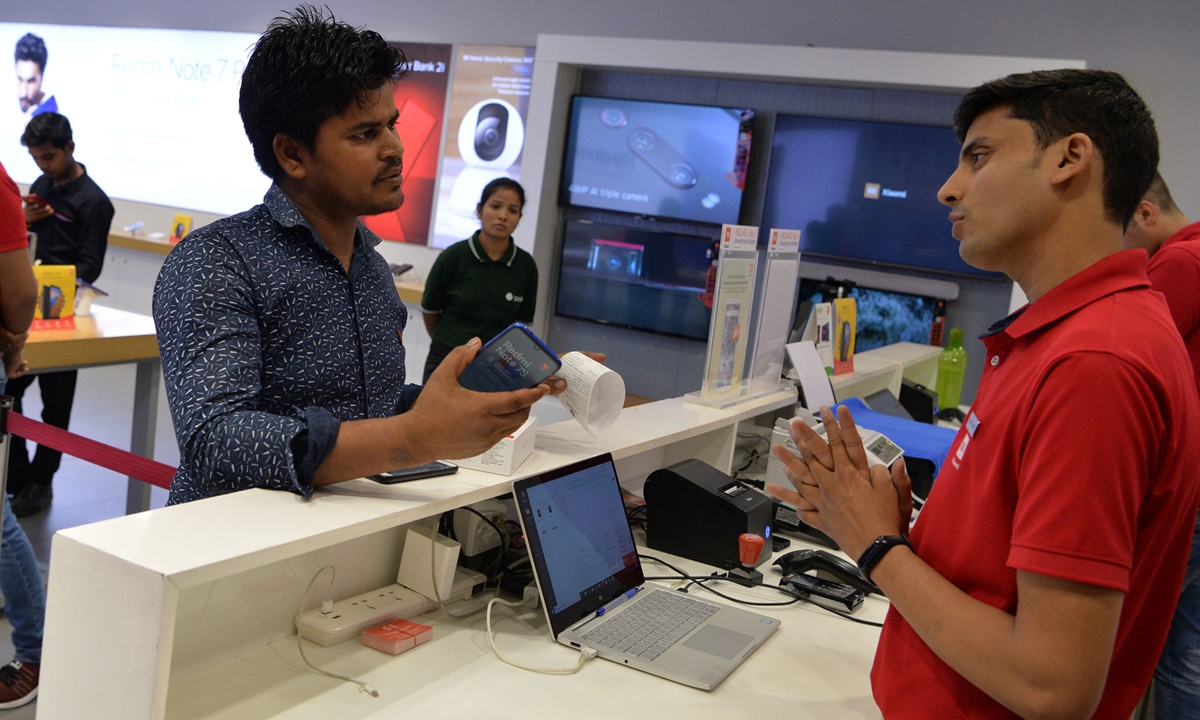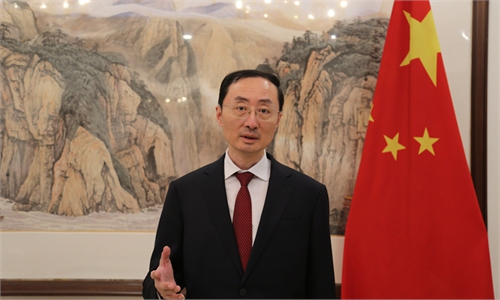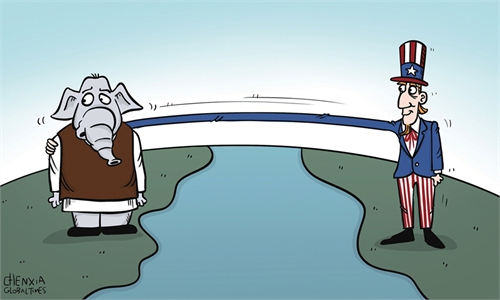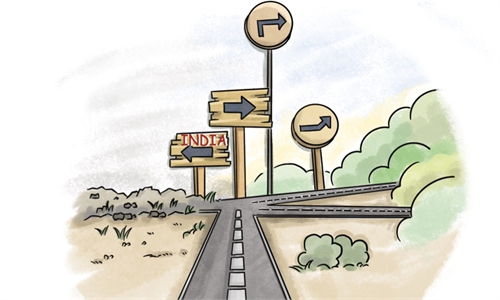
A salesman speaks with a customer at a Mi store in Gurgaon, India. Photo: VCG
In a speech marking the 75th anniversary of India's independence from British rule, Indian Prime Minister Narendra Modi pledged on Monday to raise millions out of poverty and turn India into a developed nation within 25 years.At a time when the global economy is facing multiple challenges, it is commendable that India has the courage to propose such an ambitious goal. And it would be a boon to the world if India becomes a developed nation, lifting millions of Indians out of poverty. Of course, to achieve the high target, India needs to show persistent and unprecedented resolve and efforts.
To become a developed nation, India needs to first meet the threshold of high-income country in terms of economic indicators. Last month, the World Bank updated the per capita income criteria for high-income countries to more than $13,205, while India's GDP per capita is currently around $2,200. Assuming the same criteria for high-income countries and the unchanged population base for India over the next 25 years, the Indian economy would need to grow at an average annual growth of at least 6 percent to reach the goal. In practice, that may require annual growth of more than 8 percent.
In 1990, China and India were roughly equals in terms of GDP per capita. It has taken China more than 30 years of hard working to raise per capita GDP to more than $12,000 in 2021, approaching the criteria for high-income countries of that year. Even so, China still believes there is still a relatively big gap between itself and developed economies. Compared with China's modesty, India is clearly more confident in its growth momentum when it comes to playing the catch-up.
There is no denying that India's potential for economic development is enormous, thanks in large part to its demographic dividend. India is estimated to become the world's most populous country in 2023, overtaking China, according to UN figures. Moreover, China's median age is 37.1 while India is 27.6 years old. If India's massive young people can achieve full employment, it will certainly contribute the biggest economic dividend to India's rise. But if many young Indians cannot find jobs and fall into poverty, the demographic dividend could become a huge burden on the country.
Indeed, the huge poor population in India may be the biggest hidden obstacle shadowing the Indian economy. According to the World Poverty Clock, India surpassed Nigeria to become the "poverty capital of the world" with more than 83 million poor people who live on less than $2 per day. Moreover, the COVID-19 pandemic has led to some 230 million Indians relapsing into poverty, a research showed.
Some believe that as long as the Indian economy can maintain a rapid growth rate, the poverty problem will be solved. But given India's vast wealth gap, poverty will continue to haunt the economy if there is no government initiative aimed at reducing inequality.
In 2012, China still had 98.99 million people living in poverty despite the rapid economic development over the past decades. Then, China started a targeted poverty alleviation campaign, bringing 10 to 14 million people per year out of poverty since 2013. Last year, China declared complete victory in eradicating absolute poverty.
It is worth noting that targeted poverty alleviation is not just to lift people out of poverty for a while, but to find a way for them to develop and avoid falling back into poverty. This work is still ongoing in China.
Lifting millions of Indians out of poverty may only be the first flag on its way to becoming a developed nation. Developed nations are not just measured by their economic scale, but also mean a high level of social development. Only when poverty is largely addressed can the social development levels, including medical care, health and literacy, be improved.
In addition to poverty, there are also many other problems facing India, including the caste system, land system, labor laws, and so on, which have long been hamstringing India. The fact that no fundamental changes have taken place to address the problems over the past 75 years indicates how difficult the reforms are.
In the coming years, the world will witness whether India could meet its grand target, which is not just measured by economic growth, but also by how many of the poor will be lifted out of poverty.



